With recent warm days foreshadowing lovely spring weather, the public health response to the worsening COVID-19 crisis seems destined to collide with the very human desire to get outside and move around. As Mayor John Tory announced recently, the City of Toronto has approved a bylaw that provides fines of up to $5,000 for individuals ignoring social distancing guidelines, especially in high traffic public spaces, like popular retail strips and well used parks. The police are now handing out tickets to close talkers and making decisions about whether someone has spent more time than necessary resting on a bench.
Having shut playgrounds, tied off benches, closed the boardwalks and locked off-leash dog runs, the City’s position is that residents should stay home as much as possible. Officially, physical activity — strolling, bike-riding, dog-walking — is fine, as long as individuals maintain the two-metre separation requirement, avoid groups, and don’t remain in parks.
But it seems increasingly likely that warmer temperatures, the density in some neighbourhoods, and the strain of being cooped up will draw more people outside more of the time. The question is what — if anything — the City can do to enable individuals to safely and legally get some daily outside time, especially in high density areas with a dearth of green space and side streets.
The City so far is using sticks more than carrots in its enforcement of the important social distancing edicts. While Mayor John Tory has mused about creating one-way sidewalks, other cities are taking advantage of reduced traffic to cordon off parts of the road allowance for bikes and pedestrians. So far, nothing like that from Toronto City Hall.
Spacing’s DNA is public space and we believe it’s possible for the City to find better approaches to balancing the importance of containing the pandemic against access to the outdoors. We asked five public space experts for their ideas and approaches, both for the short term and also as the city emerges from quarantine.
Ken Greenberg, planner and author, Walking Home
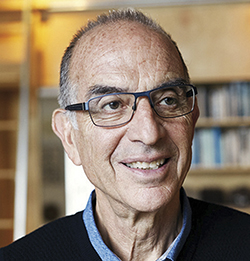 We need to be creative because we’re balancing two critical needs. The temptation to be out is great and getting greater by the day with the spring weather. Being out is what we have always wanted people to do. We need to do this for our health but now, ironically, being out is dangerous.
We need to be creative because we’re balancing two critical needs. The temptation to be out is great and getting greater by the day with the spring weather. Being out is what we have always wanted people to do. We need to do this for our health but now, ironically, being out is dangerous.
So how can we keep the beneficial part and still be safe? It’s better to do this by changing customs and habits. We need education and guidance, not just enforcement.
Some principles:
- Make it visible and tangible. Physical separators – people are quickly adapting to these — on the ground, on the floor, and on trails and sidewalks. We use chevrons on the highway to help cars keep a safe distance.
- Signal limited access to overcrowded areas.
- Use a combination of sticks, but also carrots. For example, how can we use GPS technology to send people to places that are not overcrowded? We already do this for parking with electronic signage and apps, or for negotiating traffic and avoiding traffic jams. This approach could also apply to bikes and walking.
- Open up areas for walkers where there is space for physical separation. This is possible on some neighbourhood streets for all or part of the day. Our sidewalks are generally way too narrow.
Let’s be honest: the distancing is really hard. It runs against our every fiber and instinct, and it may go on for some time. We need to make this part of a culture of solidarity, like washing your hands or sneezing in your elbow
Lastly, we need a big clever campaign to engage people: Back off to keep safe.
Kim Storey & James Brown, Brown + Storey Architects
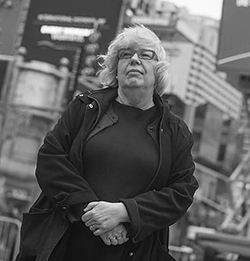 As Toronto enters its five week of social distancing, perhaps people can agree that public space has proven itself to be an essential service. The new ‘promenade’ of the spring of 2020 is a cautious but necessary stroll through our streets and our open spaces, a release of energy of bored children and anxious parents, and the critically needed mental and physical rejuvenation of a very large portion of our population living in cramped spaces without access to porches, balconies, or yards. We need it.
As Toronto enters its five week of social distancing, perhaps people can agree that public space has proven itself to be an essential service. The new ‘promenade’ of the spring of 2020 is a cautious but necessary stroll through our streets and our open spaces, a release of energy of bored children and anxious parents, and the critically needed mental and physical rejuvenation of a very large portion of our population living in cramped spaces without access to porches, balconies, or yards. We need it.
And yet, because of a small percentage of Torontonians not practicing what is so critically needed and what has been largely understood by most people, our access to public spaces has been curtailed and in some cases completely barred.
We are suggesting ways that could alleviate the crowding of the public realm, allowing our smaller city parks and streets to take on the traditional role of the Promenade.
Radical solutions seem ‘extreme’, but let’s look at the extremity of the solutions we have been able to accept – working from home, lining up for groceries, isolation from our families and friends. In order to make these conditions work in the long term, equally radical measures should accompany the quarantine to normalize the ‘new normal’.
There are immediate measures that could recognize the essential nature of Toronto’s public realm, that expand rights of way and green spaces to empower a new breed of pedestrians engaged in a new form of active transportation for well-beingthat reflects the realities of this moment.
The Promenade. Create a new typology for our streets that defines how they can be shared. Residential or side streets should become ‘promenades,’ with pedestrians as the main users, and cars, travelling 15 to 20 kph, as tolerated interruptions. We can create a new symbol, like the sharrow, but with unmistakable graphics – large and bright – that are painted on these streets to reclaim them for all of us, everywhere.
Arterial and main streets, like College Street or Ossington Avenue, should have their outside parking lanes reclaimed as a shared space, to allow pedestrians the option of walking off the sidewalk in order to maintain the two metre spacing from other pedestrians while still permitting generous space for cyclists. Paint the lanes green, line them with jersey barriers – make it really loud and obvious.
It would be ideal to prohibit parking, or limit it to alternating blocks, like the Bloor Street cycling lanes. The internet is filled with before and after pictures of how our sidewalks were claimed by cars in the 1950s. Time to take them back. And when we have time to physically re-construct our sidewalks, let’s make them beautiful and meaningful, filled with trees and gardens. For now, green paint will have to be enough.
Parks: Reinvent the parks so they create their own ‘Promenade’ space. Look at the edges of many of our parks – e.g., Trinity Bellwoods or Dufferin Grove. They are essentially no-go zones, buffers between both fast-moving arterials and residential streets. We can take that space along the edges and make a new perimeter linear park that circumnavigates the main park interior. Paths in the park are normally what people like to call ‘desire lines’ that take you in and out of the park at the most direct way. ‘Welcome to the park – now get out!’
The perimeter park could take the form of St. Hilda’s Walk in Trinity Bellwoods, which allows for a ‘braided path,’ a line of mature trees, and three kinds of surfaces – limestone fines, asphalt and concrete. These features give people choice without overly prescribing who can go where. The park promenade could take pressure away from the green interior lawns of the park while still being part of the whole.
If the flaneur becomes our new pedestrian model, then the promenade takes on the role of the spiritual maze. Let the city sidewalk wander into the perimeter of the park. The perimeter park can merge with the promenade streets and reclaimed sidewalks to better integrate our open spaces and streets, creating a pleasurable continuum of public space.
Housing and Courtyards. The intensification of the city has been the subject of many urban debates over the past several years. Intensification of housing needs to be accompanied by intensification of open space, whether public or common to residents. The courtyard block type can provide semi-enclosed yards and gardens that add to the inventory of green spaces in the city.
The future constituency of mid-rise housing should be able to access a common ‘back yard’, ‘porch’ or ‘stoop’ – all features that make Toronto house living so pleasurable. Our new housing types need to be much more rigorous about ‘middle spaces’ between the street and private homes..
Practical solutions are difficult to come by, and anything suggested here is not meant in any way to be critical of the enormous responsibility and care taken by our public health authorities. Yet we have an opportunity now to imagine how our city can function in new ways. We have elaborate organizational systems and networks that govern the status quo. We need to imagine how to create new systems that can help us now and transform our city for its next age. After all, summer is coming.
Zahra Ebrahim, city builder and 0rganizer
 I see the opportunity now, more than ever, to speak to the public on their terms, in their language. The first three weeks of this crisis were loaded with new concepts, new behaviours, and new rules. For those of us with the privilege of time and space, we could explore these rules when ready, taking our time to understand their edges, and their implications in our lives.
I see the opportunity now, more than ever, to speak to the public on their terms, in their language. The first three weeks of this crisis were loaded with new concepts, new behaviours, and new rules. For those of us with the privilege of time and space, we could explore these rules when ready, taking our time to understand their edges, and their implications in our lives.
For so many others in this city, these constraints have been layered on to so many others that were already there, compounded with the potential of financial penalty at a time when uncertainty looms around employment security. Parks and public spaces, at the best of times, provide much-needed respite from urban life. We need them now more than ever, especially for folks in the city without access to their own green or outdoor spaces.
Behaviours take time to change, and we’ve had to change so many in less than a month. My ask of our city leadership is this. Especially when it comes to parks and public spaces, do two things: speak to us in scenarios we understand, and set positive rules — not just negative ones.
In the research my team did on public space a few years ago, we discovered that unwritten rules make people feel like outsiders while negative rules heighten our anxiety and limit our creativity. We found that positive rules (“take in a moment of sunshine!”; “wave at a neighbour from across the park!”) gave people confidence to engage without anxiety. So speak in scenarios, in real life tradeoffs that people are negotiating.c Crowd source the questions residents are asking themselves daily! And let us know what is possible, not just what isn’t.
This truly is the time for human-centred leadership.
Alex Bozikovic, Globe and Mail architecture critic
 Widespread change. That should be the goal of any effort to reallocate street space. Since the outbreak of COVID-19, some civic officials and Mayor Tory have expressed concern that opening streets to pedestrians and cyclists would be dangerous because it would encourage street parties. I don’t believe that would happen. But if this concern has any validity, it’s because the city is conceiving open streets as a rare thing. If you pedestrianize a single street, it is more likely to become a hub for people to hang out.
Widespread change. That should be the goal of any effort to reallocate street space. Since the outbreak of COVID-19, some civic officials and Mayor Tory have expressed concern that opening streets to pedestrians and cyclists would be dangerous because it would encourage street parties. I don’t believe that would happen. But if this concern has any validity, it’s because the city is conceiving open streets as a rare thing. If you pedestrianize a single street, it is more likely to become a hub for people to hang out.
But what if you pedestrianized all of them? Or at least a sizeable minority of city streets? Then any sense of occasion would disappear and people would be able to go about their business on foot or by bike, with room to spare.
I would suggest the city produce 1,000 signs, each proclaiming a Slow Street zone: speed limit 15 km/h, closed to vehicles except deliveries and local traffic. Install them on a range of small streets, favouring the most heavily populated neighbourhoods in those with the most apartment dwellers.
There are other mechanisms and techniques that might work, but they must work at scale. Open streets have to be the rule, not the exception.
Melanie Hare, Partner, Urban Strategies Inc
 Post-COVID-19 pandemic we will think, plan, design and program public spaces differently. Here are four changes:
Post-COVID-19 pandemic we will think, plan, design and program public spaces differently. Here are four changes:
Rebooting our shared spaces
The public realm can be 25 to 40% of the land base of cities, neighbourhoods and city blocks. Most typically, we think of these as sidewalks, parks, schools grounds, community centres and plazas. But that’s only part of it.
COVID has required us to spread out in order to find spaces no one is using. Empty parking lots have become places to ride tricycles and laneways have lots of dog walkers. Car lanes and entire roads are being converted to pedestrian and cycling shared. There’s also a renewed interest in using our front porches and lawns, for those lucky enough to have, as our outdoor living rooms with social distancing for a cup of tea or bevy.
We will learn how to translate a broader array of public realm into hard working and shared spaces with a priority on people and pedestrians, seven days, 16 hours a day.
Precedents: Stanley Park (Vancouver), Memorial Drive (Calgary), and pop up bike lanes Germany.
Designing inter-generationally and family friendly
Social isolation exacerbates generational segregation. Our elders are isolated and our young families restlessly residing in smaller urban units. How do we improve both situations? The role of co-housing and common (at times of need) but distanced shared space may be ever more important: models that allow for independence without isolation.
We can be designing private and public open spaces that allow for oversight without direct interaction, like common courtyards faced by balconies. These also include interior multifunctional space that serve as study corrals, and informal play or knitting circles.
Innovations: Kipling Gardens day care and seniors care; Indigenous communities and values; co-housing with oversight from kitchen windows to gardens where children play (Berlin).
Renewed importance in addressing equity and access
The five-to-ten minute walk measure to parks and open space is a typical planning metric that takes on enhanced relevance when public space is limited. We need to prioritize not only how we use public space, but how we access it. In these times, the inequity of access to public space is brutally obvious in Toronto for communities in need, as well as in new vertical communities.
Mapping high demand corridors in times of COVID reveals a new vulnerability for transit reliant communities. We must also consider sheltering the homeless and feeding those in need without shepherding them under one common roof. Initiatives such as Rail Deck Park and The Bentway are ever more important for downtown, but we must also prioritize communities and city corridors in need, such as Eglinton East in Toronto or Barton Street in Hamilton.
Elevating the importance of nature, beauty and art
It’s been a spring when bird chirps have never seemed louder, nor spring buds ever brighter. Many consider the role of natural systems and biodiversity from an ecological health perspective, but the pandemic reveals the value of natural beauty and wonder in our cities as a source of spiritual lift, inspiration, mental health, and the enlightening of all our senses. Toronto’s larger network of ravines, waterfronts and parklands contribute to nature in the city, but so does every front garden bed or box, the urban street canopy, art on street poles, tagging and random plantings in alleyways.
We have an opportunity to draw inspiration from Tokyo, Amsterdam, Copenhagen, Berlin and other compact, highly dense communities in terms of optimizing every inch of space to provide beauty, renewal and growth.

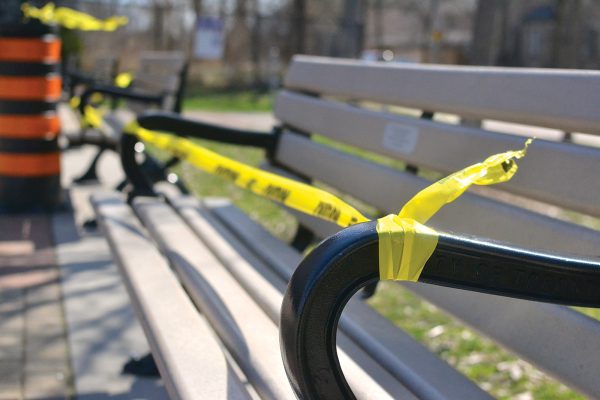
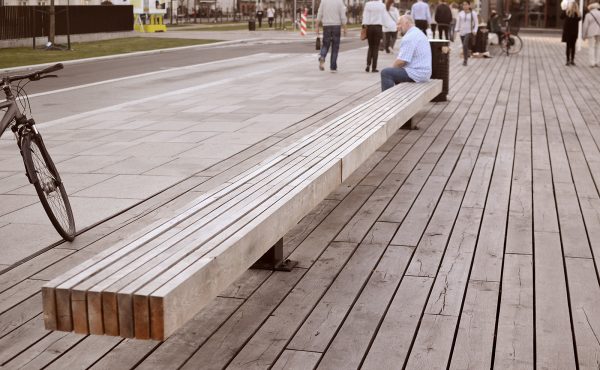

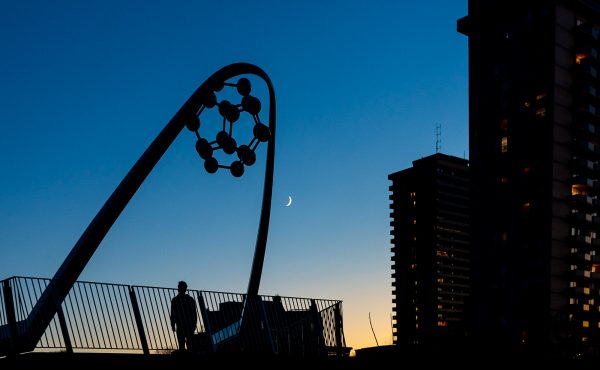
One comment
Some great comments on our changing relationship to public space.